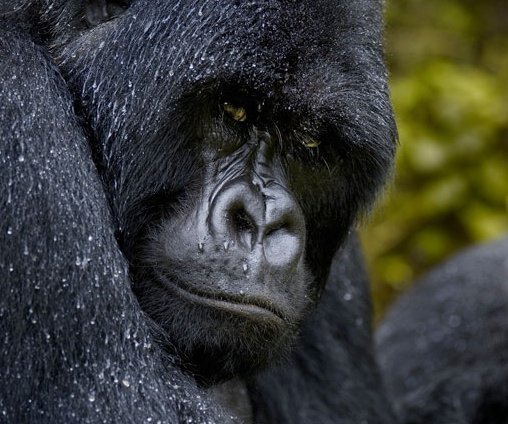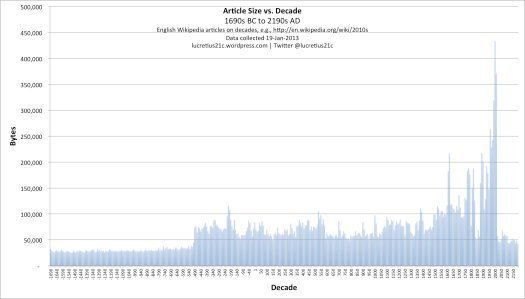Stewart Brand's Blog, page 76
February 27, 2013
Reviving and Restoring Digital Art
With the ever-accelerating evolution of hardware and software, we stand to lose much more than reels of data. A vast collection of computer art risks slipping into digital darkness, as well.
Concerned about this impending loss, NYU student Matthew Epler recently founded the ReCode project: a community-driven effort to create an active archive for the products of “creative computing.”
But lest the idea of an “archive” should call to mind anything stuffy or rigid, the project involves much more than preservation alone. Epler hopes to revive computer art by translating it into a contemporary programming language, and thereby making it available for others to learn from and use in their own creative pursuits. (This isn’t storage – it’s “movage.”)
Furthermore, the archaeological endeavor of deciphering the obsolescent code in which works of digital art were written invites us to learn something about the history of computer languages. As such, Epler hopes that the ReCode project will generate awareness of the historical and cultural context in which computer art is created. In a blog post on Wired’s web page, Epler writes:
“… this project aims to start a larger discussion about the transitory nature of not only our work but also the languages and platforms on which we create it. Can we see a common conceptual thread through these pieces that speaks to the digital art practice as a whole over decades? Or will our work always be limited by our machines? … I feel these discussions are necessary to push through the “Tumblr-era” of digital art works and into one that legitimizes itself through critical reflection and historical grounding.”
If you’re interested in getting involved, Epler invites you to join in on the process of translation. Here’s a guide to get you started.

February 26, 2013
George Dyson Seminar Tickets
Seminars About Long-term Thinking
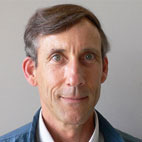
George Dyson on “‘No Time Is There’ — The Digital Universe and Why Things Appear To Be Speeding Up”
TICKETS
Tuesday March 19, 02013 at 7:30pm Herbst Theatre on Van Ness Ave. San Francisco, California
Long Now Members can reserve 2 seats, join today! & General Tickets $15
About this Seminar:
When thinking about the future, it is easy to forget to look behind you. Enter George Dyson, “an historian among futurists”, who does deep research into the history of computing to understand the trends that will bring us into the future.
One of his persistent themes is taking the “digital universe” metaphor seriously. When we turned on the first computers, we created a computational universe, a universe that is now growing by 5 trillion bits of storage per second. This universe is not merely expanding–it is exploding, and we need to understand computer time as well as we understand human time.
This talk is in partnership with General Assembly and we would like to extend a special welcome to their members.

Seeds Are the New Books
The Basalt Public Library in western Colorado has recently started lending seeds out to members. The members “borrow” the seeds with their library card, grow the plants, and harvest the best fruits’ seeds to give back to the library. The library gets better seeds back, while the members get to enjoy most of the harvest and learn more about the embodied art of gardening in the process.
Saving seeds itself is not a new idea–it is an ancient practice that goes back to the invention of agriculture. But combining a seed bank with the modern library is a novel answer to the threat of digital irrelevance, and one that can help preserve the thousands of endangered heirloom varieties that we have cultivated over civilization’s history.
As books and other media start to make the cloud their permanent home, libraries inevitably face the question of how to stay relevant in the future. Part of the answer will probably always be free access to information resources, but the trend seems to suggest that this will become far less pertinent with the proliferation of ebooks, online classes, book-scanning projects, and general free digitalized information.
It is easy to forget that libraries are some ways, very radical institutions. It’s true, you have to be quiet, but the idea that everyone should have access to as much information as possible is a beautiful and powerful concept. When one considers that seeds and the DNA they contain are one of the original information storage devices, it’s almost hard to understand why libraries haven’t always included seeds.

February 25, 2013
Revive & Restore presents TEDxDeExtinction – March 15

Where molecular and conservation biology meet, a new scientific field is emerging: De-extinction. Scientific and technological advances are making the prospect of reviving extinct species a realistic goal.
Revive & Restore is a project of The Long Now Foundation that seeks ecological enrichment through extinct species revival.
A private meeting last fall, jointly organized with the National Geographic Society, brought various practitioners in this burgeoning field together to discuss challenges, long-term goals, best practices, and ethics. As an outcome of that private meeting, the NGS offered to host a public forum to further explore the science of de-extinction and promote dialog on the ethical issues surrounding it.
Along with a brand new website designed and built by Benjamin Keating and Matthew Brown, Revive & Restore is unveiling plans for its first public forum to be held in partnership with the National Geographic Society on Friday March 15th:
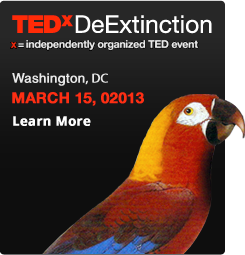 TEDxDeExtinction
TEDxDeExtinctionan independently organized TED event at Grosvenor Auditorium in Washington, DC.
Featuring Carl Zimmer, George Church, Revive & Restore’s own Ben Novak and 22 other speakers, it will be a daylong extravaganza of de-extinction science, art and ethics.
On the TEDxDeExtinction website, you can learn more about the event, buy tickets to attend in person, or sign up to host a livestream viewing party. Keep up with announcements related to the event on Twitter and Facebook.
Prior to TEDxDeExtinction, on Wednesday 2/27/13, Revive & Restore (and Long Now) co-founder Stewart Brand will appear at TED to give a talk on the increasing feasibility of bringing back extinct species.
(This independent TEDx event is operated under license from TED.)

February 22, 2013
Chris Anderson Seminar Media
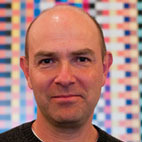 This lecture was presented as part of The Long Now Foundation’s monthly Seminars About Long-term Thinking.
This lecture was presented as part of The Long Now Foundation’s monthly Seminars About Long-term Thinking.
The Makers Revolution
Tuesday February 19, 02013 – San Francisco
Audio is up on the Anderson Seminar page, or you can subscribe to our podcast.
*********************
Desktop manufacturing changes world – a summary by Stewart Brand
We’re now entering the third industrial revolution, Anderson said. The first one, which began with the spinning jenny in 1776, doubled the human life span and set population soaring. From the demographic perspective, “it’s as if nothing happened before the Industrial Revolution.”
The next revolution was digital. Formerly industrial processes like printing were democratized with desktop publishing. The “cognitive surplus” of formerly passive consumers was released into an endless variety of personal creativity. Then distribution was democratized by the Web, which is “scale agnostic and credentials agnostic.” Anyone can potentially reach 7 billion people.
The third revolution is digital manufacturing, which combines the gains of the first two revolutions. Factory robots, which anyone can hire, have become general purpose and extremely fast. They allow “lights-out manufacturing,” that goes all night and all weekend.
“This will reverse the arrow of globalization,” Anderson said. “The centuries of quest for cheaper labor is over. Labor arbitrage no longer drives trade.” The advantages of speed and flexibility give the advantage to “locavore” manufacturing because “Closer is faster.” Innovation is released from the dead weight of large-batch commitments. Designers now can sit next to the robots building their designs and make adjustments in real time.
Thus the Makers Movement. Since 2006, Maker Faires, Hackerspaces, and TechShops (equipped with laser cutters, 3D printers, and CAD design software) have proliferated in the US and around the world. Anderson said he got chills when, with the free CAD program Autodesk 123D, he finished designing an object and moused up to click the button that used to say “Print.” This one said “Make.” A 3D printer commenced building his design.
Playing with Minecraft, “kids are becoming fluent in polygons.” With programs like 123D Catch you can take a series of photos with your iPhone of any object, and the software will create a computer model of it. “There is no copyright on physical stuff,” Anderson pointed out. The slogan that liberated music was “Rip. Mix. Burn.” The new slogan is “Rip. Mod. Make.”
I asked Anderson, “But isn’t this Makers thing kind of trivial, just trailing-edge innovation?” “That’s why it’s so powerful,” Anderson said. “Remember how trivial the first personal computers seemed?”
Subscribe to our Seminar email list for updates and summaries.

Honduran Charter Cities and Path Dependency
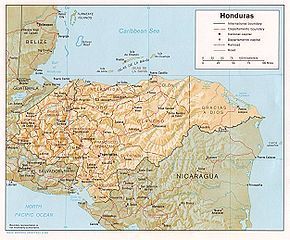
In 02011, economist Paul Romer was given an opportunity that few of his colleagues ever get: a chance to see one of his theories tested in a real-world setting. Octavio Sanchez, an idealistic government official in Honduras, saw in Romer’s proposal a resemblance to an idea of his own: to solve the country’s vexing problems by creating a semi-autonomous charter city in which a new and functional social order could be built “from scratch.”
Sanchez and Romer partnered up in what seemed to be a promising opportunity to put Honduras on a path to socio-economic development. But just a year later, their idealistic project seems to have fallen irreparably apart. Two NPR reporters recently traveled to Honduras to investigate what might have gone wrong.
As Romer explained in a 02009 SALT seminar and later in a TED talk, developing countries like Honduras are stuck in a vicious cycle of “bad rules.” Figuring out where to start the process of fixing these rules can be difficult. As Jacob Goldstein of NPR’s Planet Money explains,
“Say you want to start with the education system. The education system is terrible because teachers are always on strike. Teachers are always on strike because they don’t get paid. They don’t get paid because the government does a terrible job collecting taxes. Oh, and also, because the government doesn’t collect taxes, it can’t hire a proper police force. And there’s a huge backlog in the courts. And Hondurans think their cops, and for that matter lots of other government workers, can be bought and sold. So you have corruption, and chaos, and violence. How can you fix this? Where do you start?” (This American Life)
Rather than try to tackle all of these problems at once, both Romer and Sanchez concluded that the most effective solution would be to simply wipe the slate clean, and start from scratch in one little corner of the country. If successful, the new system could then be replicated on a larger scale. Planet Money’s Chana Joffe-Walt elaborates:
“Pick a totally uninhabited site, and … say, we’re going to create another alternative. And the city you build on this uninhabited site, Paul [Romer] calls it a charter city. The idea is, this city has its own set of laws. Its own cops, its own courts, its own schools, everything. This is a city where you start from scratch. And to make sure that the cops and courts and schools in this new city are good ones, you have to get help from rich countries. So, say you get the UK to let court cases in the charter city be appealed to courts in the UK. Maybe Canada sends in some Mounties. Now, Paul says, you have a place that works, right inside a poor country that doesn’t.”
Sanchez and Romer were essentially proposing what mathematician Samuel Arbesman has recently called “procedural city generation.” Writing about the trend of constructing micro-cities with LEGO bricks, Arbesman explains that real cities derive their vibrant and organic “city feel” from what is known in mathematics as path dependence,
“where one’s current state is highly dependent on where one came from, and the decisions one has made along the way. Essentially, the state of the system is dependent on its path through the space of possible states.”
When starting from scratch, this city feel can be created by relying instead on a pre-determined set of rules, procedures, or algorithms – in other words, a charter.
But what makes Romer’s charter unique – and slightly more complicated than its LEGO equivalent – is its reliance on international guarantors; on the guidance of developed nations. It has prompted fellow economists to accuse Romer’s plan of neo-colonialism. Yet Romer insists that his proposal is different. Essential to the success of a charter city, he claims, is the notion of choice. A country must freely choose to invite foreign investors into a joint venture of city-building, and individuals must freely choose to join the new community and abide by its charter. Without coercion, Romer states, one cannot speak of colonialism.
Hondurans, however, disagreed. They felt belittled, turned into guinea pigs for a project construed by the international media as a North American scholar’s brilliant solution to the problem of poverty. Sanchez and his team responded first by reducing Romer’s involvement in the project; then by calling a stop to it altogether.
In a recent episode of This American Life, the Planet Money team asks: was this simply a petty disagreement over who should get credit for this plan?
In determining how to answer this question, the reporters remind listeners that
“… the phrase ‘Banana Republic’ was invented to describe Honduras. US-based fruit companies were hugely powerful here for a big chunk of the twentieth century. At one point, one company even funded a coup to overthrow the government. Before that, there were hundreds of years of Spanish colonialism.”
 Unlike a LEGO micro city, a geographical region – no matter how uninhabited or desolate – always has history. It simply isn’t possible to escape path dependence and “start from scratch.” The history of Honduras is rife with painful periods of imperialism and exploitation – and the way in which the charter city project unfolded
Unlike a LEGO micro city, a geographical region – no matter how uninhabited or desolate – always has history. It simply isn’t possible to escape path dependence and “start from scratch.” The history of Honduras is rife with painful periods of imperialism and exploitation – and the way in which the charter city project unfolded
“… sent a clear message to Honduras: North Americans, the whole rich world, they don’t think you’re up to running your own country. So all this petty stuff is just not petty in Honduras. It really matters when a story in [the Economist] says that a Honduran idea is actually a brilliant plan imposed by a North American economist.”
But the legacy of colonialism does more than render Hondurans sensitive to new American efforts to get involved with the country’s development. Its current problems are in many ways the direct result of these episodes of imperialism. As Octavio Sanchez explains,
“We are poor not because we are dumb. We are poor because of our institutional arrangement, not because we lack the capacity to imagine things.”
It is worth asking, then, how much choice a country like Honduras really has in asking developed countries for help in combating poverty and corruption.
In sum, the story of how this project failed is not so much an illustration of how petty misunderstandings can ruin an idealistic project, but rather a lesson in the importance of looking back when you’re thinking about the long-term future, and acknowledging the ways in which your path through history will shape the course of your future.

Stewart Brand and Isabella Kirkland discuss extinction and revival – 3/7/13
On Thursday March 7th, Stewart Brand and Isabella Kirkland will discuss their combined efforts to keep recently extinct species from completely fading away. Kirkland has created a series of paintings featuring endangered and extinct species (on display at the David Brower Center in Berkeley – where the talk will be held) and Brand is working with molecular and conservation biologists to bring the passenger pigeon and other extinct species back to life.
Kirkland’s work, influenced by 16th and 17th century Dutch still lifes, includes two series of paintings, Taxa and Nova. Taxa delves into the biodiversity of past and present, featuring species that are extinct, in decline or that have been brought back from the brink of extinction. Nova, on the other hand, focuses more on the future, exploring plant and animal species discovered over the past two decades and hinting at the possibilities of what could be if we take action to protect our natural resources.
The talk is free to attend.
The David Brower Center
Conversation and book signing with Isabella Kirkland and Stewart Brand
Presented in partnership with the Long Now Foundation
Thursday, March 7
7:00 pm to 9:00 pm
Goldman Theater
Please see the Brower Center website for details, and Brown Paper Tickets to RSVP.

February 21, 2013
Happy International Mother Language Day 02013!
On The Rosetta Project Blog, intern Karin Wiecha writes:
Today mother tongues will be celebrated world wide. This date was chosen by UNESCO in recognition of the Bengali language movement, where on February 21, 01952, students protested for their language to become an official national language. Several protesters taking part in the demonstration were killed by police. The celebration of International Mother Language Day reminds us of the importance of linguistic diversity and the human right to use one’s mother tongue, no matter how few speakers it might have, to be preserved and passed on to future generations.
The theme of this year’s International Mother Language Day is Books for Mother Tongue Education. This theme highlights the importance of mother tongue education for the survival of linguistic diversity. For a large number of languages there are no books or teaching materials. But with a majority language being the language of instruction at school, children of minority language speech communities have little chance to become literate in their mother tongue. Also many young speakers are prone to switch to a globally more dominant language when they realize that the use of their mother tongue does not allow them to take part in all walks of modern life. Mother tongue education is an important step towards preserving the world’s language diversity for the future.
Today and in the coming days people all over the globe are celebrating this diversity in a variety of events. Do you want to help raise awareness of the importance of linguistic diversity? You could help The Long Now Foundation’s PanLex Project translate “mother tongue” in as many languages as possible. You could also print the official International Mother Language Day 02013 poster and hang it at school or work. For more ideas on how to get involved, visit the UNESCO’s website.

February 20, 2013
Teaching old dogs new tricks
Humanity’s success as a species is often credited to intellect: our uniquely large and capable brains, evolved relatively recently in biological terms, allowed us to reason our way to technological innovation and ecological domination.
Or so the story goes. Stephen Asma, for Aeon Magazine, writes that we might owe an even deeper debt, however, to an older part of ourselves and uses a trip to Africa to illustrate how.
Walking around (very carefully) on the Serengeti is like visiting the nursery of our own mind.
In describing encounters with gorillas, lions and wildebeests, Asma discusses the burgeoning field of affective neuroscience, a program of study interested in the biological and evolutionary underpinnings of emotions and how they affect decision-making:
Neuroscience has begun to correct the computational model by showing how our rational, linguistic mind depends on the ancient limbic brain, where emotions hold sway and social skills dominate. In fact, the cognitive mind works only when emotions preferentially tilt our deliberations… Our rational mind is truly embodied, and without this emotional embodiment we have no preferences. In order for our minds to go beyond syntax to semantics, we need feelings. And our ancestral minds were rich in feelings before they were adept in computations.
While the “cognitive mind” of the neo-cortex is a fairly recent development in our evolution, shared only partially by some close primate relatives, this emotional system is older and more widely shared among mammals. So, how can it account for our unique success?
Asma points to new developments in climate studies that upend another common narrative of popular evolutionary psychology – that a period of stable climate and ecology led to the genetic development of our current superlative problem-solving. New data seem to indicate that the human brain’s unprecedented expansion happened not during a time of climatic stability, but rather during a time of relative chaos. Should new evidence continue to support this picture, well-established theories like Chomsky’s “universal grammar” will require revising as they rely on the assumption that independent problem-solving modules within the mind genetically evolved during this stable period.
Instead, a chaotic and changing environment that historically coincides with brain expansion would indicate that we survived by developing a unique ability to learn, change and adapt to unexpected circumstances:
According to this view, the neocortex is a highly flexible, general problem solver. Our environment selected for a mind with reliable pattern recognition and prediction powers, but it didn’t give us specific modules for thought contents or behaviors. As affective neuroscience advances, this scenario comes to look more credible, albeit with a surprising twist. It seems that even the emotional springs of the limbic system — our fear, care, rage and so forth — are more pliable and open-ended than we previously thought.
Asma covers a lot of ground in the essay, literally and figuratively, but ultimately reminds us that while intelligence might be like a new disruptive technology, our older, mammalian emotional heritage spryly pivoted along with it.

February 14, 2013
Decades, Centuries and Millennia on Wikipedia
Vladimir Ilyich Lenin is reported to have said,
There are decades where nothing happens; and there are weeks where decades happen.
Our subjective experience of time and events can even be reflected beyond the scale of decades, as blogger Lucretius, Ver 21c has methodically demonstrated. He compared the length of Wikipedia articles that summarize decades, centuries and millennia, and graphed the analysis to show which periods seem to contain relatively more noteworthy happenings (or, perhaps, simply how much we currently know about them):
He points out:
Interestingly, the larger the time unit, the less weighted Wikipedia is to the past in terms of article count: 5% of the decade articles, 13% of the century articles, and 35% of the millennium articles pertain to the future.

Stewart Brand's Blog
- Stewart Brand's profile
- 291 followers





